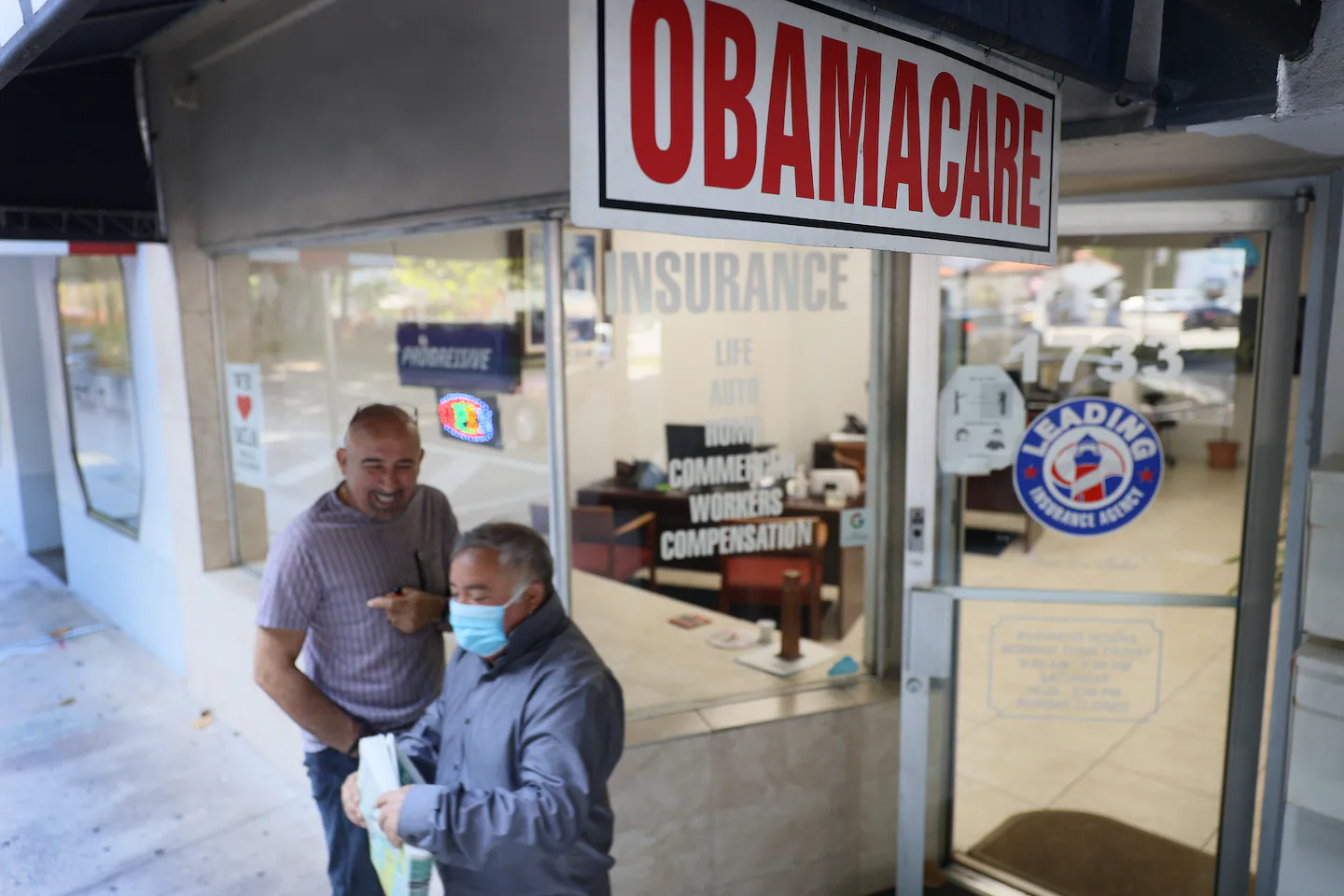
Similar sticker shock may await millions of Americans who must start to sign up for coverage in November. The vast majority of people enrolled in plans under the Affordable Care Act receive additional federal tax credits that were first expanded by President Joe Biden and Congress in 2021.
Those subsidies, set to expire at the end of the year, are now the subject of a standoff between Democratic and Republican lawmakers. Democratic leaders in both the House and Senate have demanded an extension in exchange for their support of a government spending bill that must pass by the end of this month to prevent a government shutdown.
Republican leaders have cited the high cost of the subsidies, estimated at about $350 billion over 10 years, and potential fraud in enrollments for the program. And they have balked at attaching an extension onto this month’s short-term spending bill.
But many individual Republican lawmakers have expressed a willingness to extending the funding in some form, acknowledging that its disappearance would hurt their constituents before the midterm elections.
If a deal is not struck, more than 20 million Americans will face higher insurance premiums next year. The Senate was unable to pass any version of the spending bill last week, increasing the risk of a government shutdown over the issue.
“The consequences are potentially pretty dire for the 24 million people in the marketplaces whose costs are going to skyrocket,” said Drew Altman, the CEO of KFF, a nonpartisan health research group.
KFF has estimated that Americans’ share of premiums could increase by an average of more than 75%. About 2 million people are expected to lose their coverage next year if the extra funding expires, according to estimates from the Congressional Budget Office. And the number is expected to grow over the next decade.
The generous credits now apply to more people and cover more of the cost of premiums than before the pandemic. At the low end of the income scale, individuals now pay nothing in premiums for plans with low deductibles. The extra subsidies also helped higher earners — like a family of four earning more than $160,000 a year — for the first time.
Reductions in the subsidies could have effects that cascade into the overall markets. Coupled with other changes made by this Congress and the Trump administration, the number of people with ACA plans could eventually decline by roughly half, with states like Florida and Texas seeing the most significant drops, according to an analysis by actuarial firm Wakely Consulting before Republicans passed their major tax and domestic policy bill this summer.
Actuaries expect that people with continuing medical needs, such as Morringello, will be more likely to stay enrolled despite the higher costs, while younger, healthier people may be more likely to drop coverage.
Health insurers are watching warily, and most have increased rates to account for the anticipated flight of healthy customers. According to an analysis by KFF of company filings, insurers are increasing premiums around 4 percentage points on average to account for a sicker group of customers next year. They are also raising prices because of increasing medical costs.
Other recent Trump administration actions could erode sign-ups among younger, healthier people. Health officials recently embraced less comprehensive forms of insurance that were not as expensive. They have also initiated rules that make it more complicated to enroll in “Obamacare” plans and harder to renew at the end of the year. Many of those changes are under legal challenge in the courts.
No one expects the “Obamacare” market to collapse. But after next year, experts warn, some insurers are likely to think twice about whether to sell plans in some markets, and choices could decline. In May, Aetna, the insurer owned by CVS Health, decided to leave the “Obamacare” markets altogether (though it only covered about 1 million people nationwide).
“I don’t think it will go away, but I think it will be a lot worse,” said Jeanne Lambrew, the director of health reform for the Century Foundation and a former state commissioner of Health and Human Services in Maine.
Linda Greenfeld, a senior executive at L.A. Care Health Plan, which offers “Obamacare” plans to low-income residents of Los Angeles County, said that losing the expanded subsidies would have “a devastating effect” on the plan’s customers. More than half are enrolled in plans where they don’t have to contribute to their premiums’ cost at all, which she said makes coverage “a reality for most people.” Even the difference between paying nothing and $50 a month would force some people to choose between health coverage and putting food on the table, she said.
Some critics of the subsidies argue that the expanded tax credits are helping wealthier Americans who don’t need the assistance. Others say the plans that require no direct payments from participants have led to fraudulent and duplicative enrollment. Some House Republicans have described the effort to make the expanded credits permanent as “massive taxpayer-funded handouts to the wealthy and large health insurance companies.”
Brian Blase, the president of the Paragon Health Institute, an influential conservative health policy group, has argued that Congress should eliminate the zero-dollar premiums to prevent fraud.
“I would say the underlying ‘Obamacare’ subsidies are themselves very generous,” he said, noting that if the expanded subsidies disappeared, the lowest-income Americans would still pay around $30 a month for insurance.
But despite their party’s long-standing aversion to “Obamacare,” some Republicans appear increasingly interested in keeping at least some of the tax credits. Coverage losses are expected to occur disproportionately in Republican-governed states such as Florida and Texas. And vulnerable Republican lawmakers worry about a political backlash if their constituents experience sticker shock before the midterm elections. Ten Republican House members have cosponsored legislation to extend the subsidies temporarily. Sen. Lisa Murkowski, R-Alaska, introduced her own such bill last week. And a number of other Republican senators have expressed interest or openness to an extension.
But so far, Republican leaders have said they will not include the measure in the government spending bill, as Democrats have demanded.
In Alaska, where “Obamacare” insurance is particularly expensive without subsidies, higher earners would see large increases.
Without the extra aid, Natalie Kenley, 43, said that she expected her family’s premium to jump to more than $2,000 from $1,600 a month. Kenley, of Palmer, Alaska, whose husband owns a dental practice where she also works, has multiple sclerosis and needs the coverage. “I’m really concerned about health care costs because they feel very unpredictable,” she said.
“Obamacare” has become a critical insurance option for those without access to health insurance at work. About half of the people now enrolled either work for small businesses that may not offer coverage or are self-employed, according to a recent analysis by KFF.
Morringello’s husband is retired and on Medicare, and she has already chosen one of the least expensive plans, which includes a $7,500 deductible. Coming up with an extra $5,000 a year to pay for premiums won’t be easy — she is thinking about canceling things like her membership at the local Y.
“If I can’t pay it, I’ll have to use my savings,” she said.



